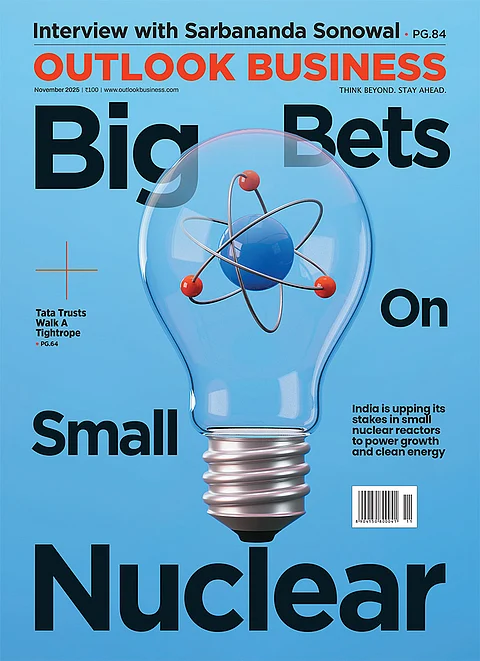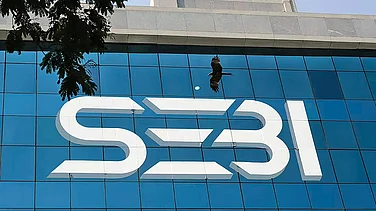
Autos, cement, staples, and insurance could gain if GST rates are rationalised to 5% and 18%, with sin goods at 40%.
Analysts see retail prices falling 4–5%, giving households more spending power and driving margin gains for consumer companies and real estate.
Banks and insurers stand to benefit from stronger credit demand and improved affordability in health, life, and general insurance.
Prime Minister Narendra Modi’s Independence Day announcement of a major overhaul to India’s Goods and Services Tax (GST) regime has set the stage for what analysts are calling the most significant indirect tax reform since GST’s launch in 2017. Investors cheered for the ‘surprise’ gift offered by the government in a bid to spur consumption and reduce tax load on the masses. The move sent auto, cement, consumer and financial stocks higher on hopes of lower rates feeding directly into consumption.
The government is reportedly considering scrapping the current four-rate structure in favour of a two key slab system of 5% and 18% rates, alongside a 40% sin tax. According to Emkay Global, “This is a massive positive for India as it is a consumption stimulus, will lead to ease of doing business with fewer rates, and result in greater formalisation of the economy as the cost-benefit of evasion turns adverse.”
Autos and durables lead optimism
Brokerages hold an unanimous opinion that automobiles could emerge as the biggest beneficiaries of the tax reforms if the 28% GST slab on passenger vehicles and two-wheelers is pulled down to 18%. “All the listed two-wheeler OEMs – Bajaj, Hero, TVS and Eicher, should be beneficiaries of this cut,” Jefferies remarked.
Maruti Suzuki, for its biggest presence in the passenger vehicle segment, is widely seen as the standout winner among four-wheeler manufacturers, with Motilal Oswal also adding Tata Motors and Ashok Leyland to the list of beneficiaries.
Other sectors that are seen reaping the spur in consumption due to the GST tax cuts are air-conditioners and white goods, which could see a sharp revival in demand. “We expect this change to strongly influence demand for air conditioners, particularly after recent signs of weakness,” CLSA said, highlighting Voltas and Havells as the key beneficiaries.
Cement and consumption
Cement, currently taxed at 28%, is another sector in focus. Motilal Oswal estimates prices could fall by 7.5–8% if rates are cut to 18%, calling it “a key sentiment boost” for the industry. The government, however, may need to absorb a revenue hit of ₹20,000–25,000 crore, according to Jefferies.
For real estate developers, cheaper cement could lift margins by 40–50 bps, given that it makes up 4–5% of house prices in top cities.
Consumer staples may also get a leg-up. Food and beverage products such as dairy, bottled water, juices and packaged snacks could shift from the 12% bracket to 5%, offering margin comfort to companies including Bikaji, Gopal Snacks, Nestlé India and Dabur. Ayurvedic players such as Dabur and Emami may gain further, as “most Ayurveda products are in the 12% tax bracket which could likely go down to 5%,” Jefferies noted.
Insurance and financials
A cut in GST on health and life insurance is also on the table. Emkay said “a cut in GST on term plans from 18% to 5% would support Max Financial,” while general insurers such as Star Health and ICICI Lombard could benefit indirectly from a potential uptick in vehicle sales.
Lenders, meanwhile, are expected to ride on the consumption revival which will likely boost credit demand. Motilal Oswal sees “household confidence and demand for debt increasing, driving credit growth into double digits in 2HFY26,” with ICICI Bank, HDFC Bank and IDFC First Bank as key beneficiaries.
Consumption back in flavour
The prospect of tax cuts also shifts the spotlight back on consumption, a theme that has lagged in recent months. Nomura wrote, “We prefer consumption to investment theme,” pointing to the underperformance of consumer stocks of late.
“Broad-based GST rate cuts from 12% to 5% on most items, and from 28% to 18% on several higher-taxed goods would reduce prices on essentials and selected discretionary categories (including consumer durables), likely providing some lift to private consumption,” Goldman Sachs wrote.
The GST Council is expected to take up these proposals later this year. For now, Dalal Street is weighing the possibility of retail prices dropping by 4–5%, providing households with some relief and giving India’s consumption story fresh momentum and the market, a new set of tailwinds.



























